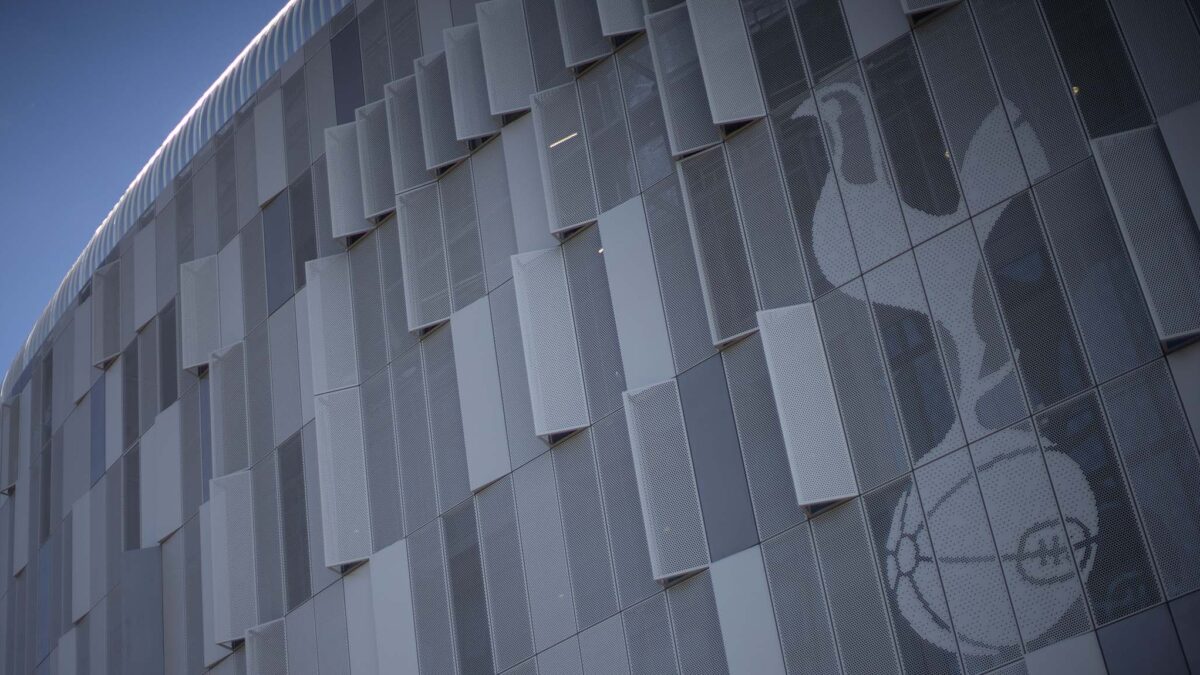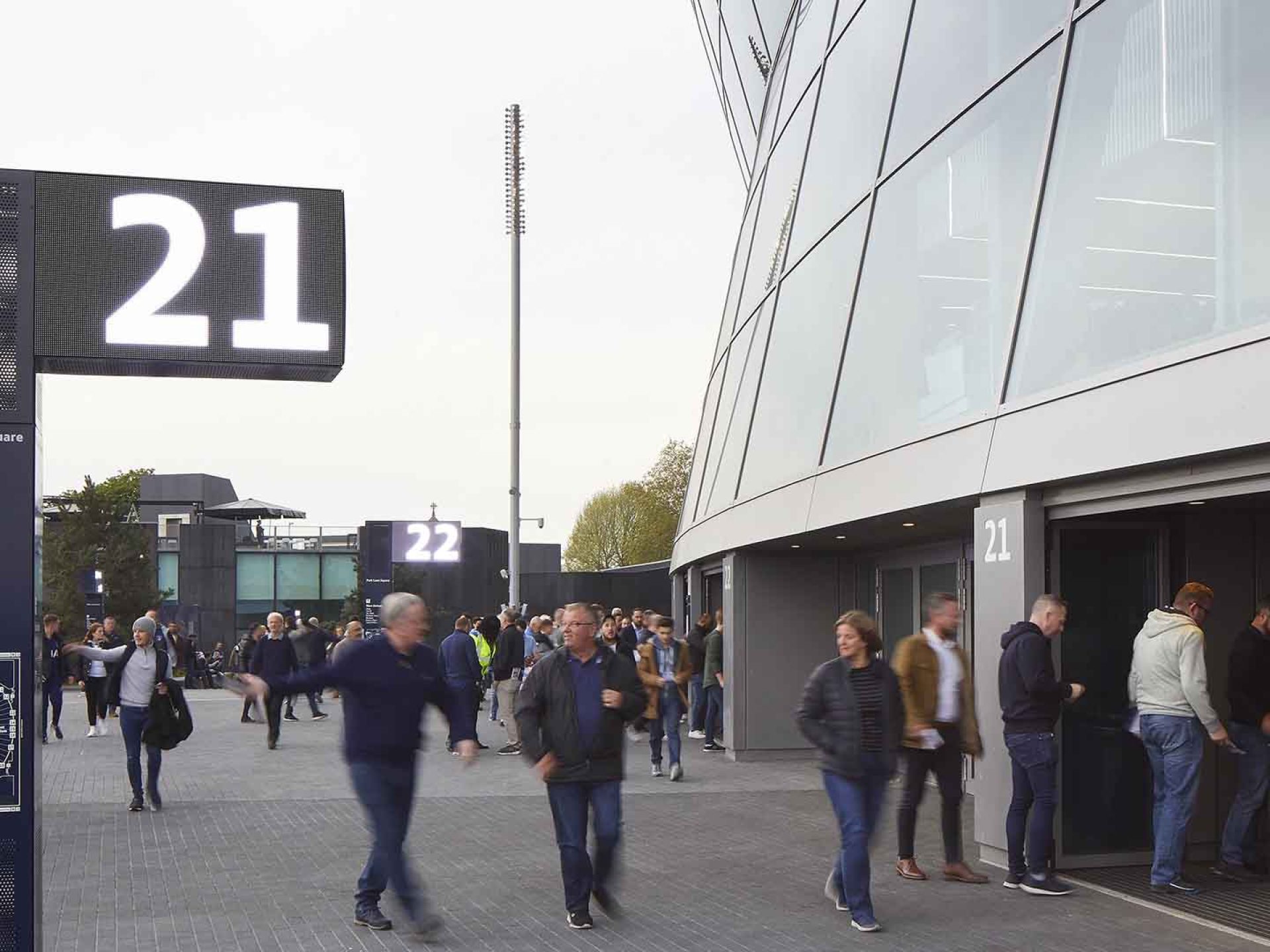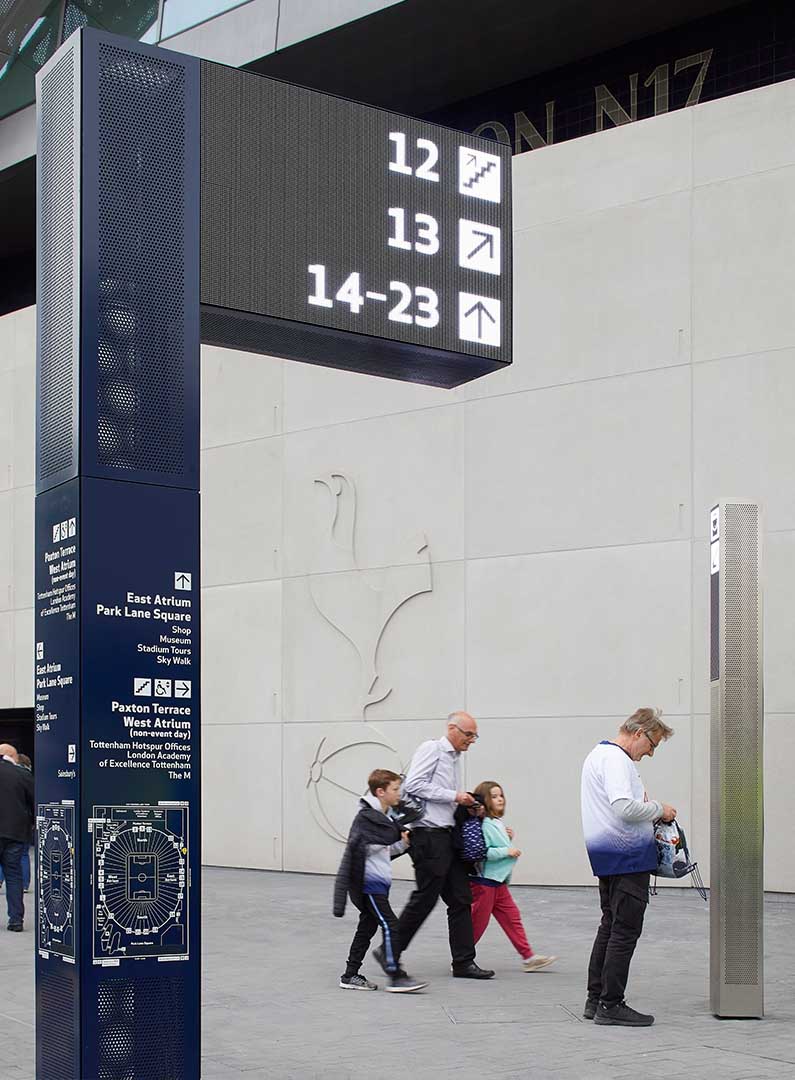Perspectives

April 2, 2019

The wayfinding system for Tottenham Hotspur Stadium uses variable digital signage to meet the myriad needs of event organisers
With the venue set to play host to NFL games in the UK, as well as other large-scale events such as concerts and conferences, the wayfinding design for Tottenham Hotspur Stadium demanded a radical re-thinking of traditional methods.
“It was clear that a conventional signage system wasn’t going to work: there were so many different scenarios that the stadium needed to adapt for,” reflects Simon Borg, Creative Director of Populous’ wayfinding and brand activation teams. “We looked at a number of different solutions and eventually settled on using a mix of analogue and digital LED screens.”

These screens, which Londoners will recognise from outside underground stations such as Oxford Circus and Piccadilly Circus, allow a significant degree of flexibility to the stadium’s operations team; enabling bespoke event-specific information to be displayed and last-minute changes or messages to be quickly programmed in.
Borg explains how the new systems will assist with shepherding fans on match days: “For Premier League games away fans will be allocated around 3,000 seats in the bottom tier of the north-east corner of the stadium, and these will be accessed via Gate 7.
“However, for the latter stages of domestic cup games this allocation can grow to around 9,000 seats and access expands to include Gate 6. The digital signage allows us to change the messaging to adapt to both of these scenarios in a way that simply wouldn’t be possible with a traditional wayfinding system”
Once the overarching design strategy had been agreed upon, designers turned their attention to the positioning of the signs. Research undertaken by the design team showed that signs placed parallel to a wall, readable only when viewed front-on, caused significant crowd flow problems.
The answer, then, was to use raised, perpendicular signposts outside of the stadium together with drop-down signs on the general concourses inside the stadium; both types easily readable from a distance and located well above head-height so that people can walk beneath them.
Simon Borg goes on to explain that: “The principle behind the signposts is to use the LED screens to display the variable headline destinations — i.e. the gate numbers — so patrons can orientate themselves quickly. As they arrive at their gate, traditional sign boards will direct them into the stadium. Inside, we didn’t want to create any obstacles or for the signs to be obscured by crowds, hence the need for the drop-down sign design.
"Just painting enormous numbers and letters onto the walls was never an option for us."
As well as allowing spectators to navigate to their seats, these drop-down signs serve a secondary purpose, concealing miles and miles of electrical cabling. Design innovations like this could only be achieved through close collaboration between the architecture and wayfinding design teams. Therefore the strategy for Tottenham Hotspur Stadium was for the wayfinding team to work with the architects at the earliest possible stage in the project so that the signage could be integrated into the fabric of the building.
“The stadium itself is stunning, and we wanted to develop a wayfinding system that enhanced its design. You can see this in the subtle details; the perforations in the signboards that echo those on the façade of the stadium; the subtle activation of the Tottenham Hotspur brand through the use of the club’s colours and its preferred modern typeface, Apex. Just painting enormous numbers and letters onto the walls was never an option for us.”
Lorem ipsum dolor sit amet consectetur, adipisicing elit. Non facere corporis et expedita sit nam amet aut necessitatibus at dolore enim quis impedit eius libero, harum tempore laboriosam dolor cumque.
Lorem, ipsum dolor sit amet consectetur adipisicing elit. Illo temporibus vero veritatis eveniet, placeat dolorem sunt at provident tenetur omnis, dicta exercitationem. Expedita quod aspernatur molestias eum? Totam, incidunt quos.